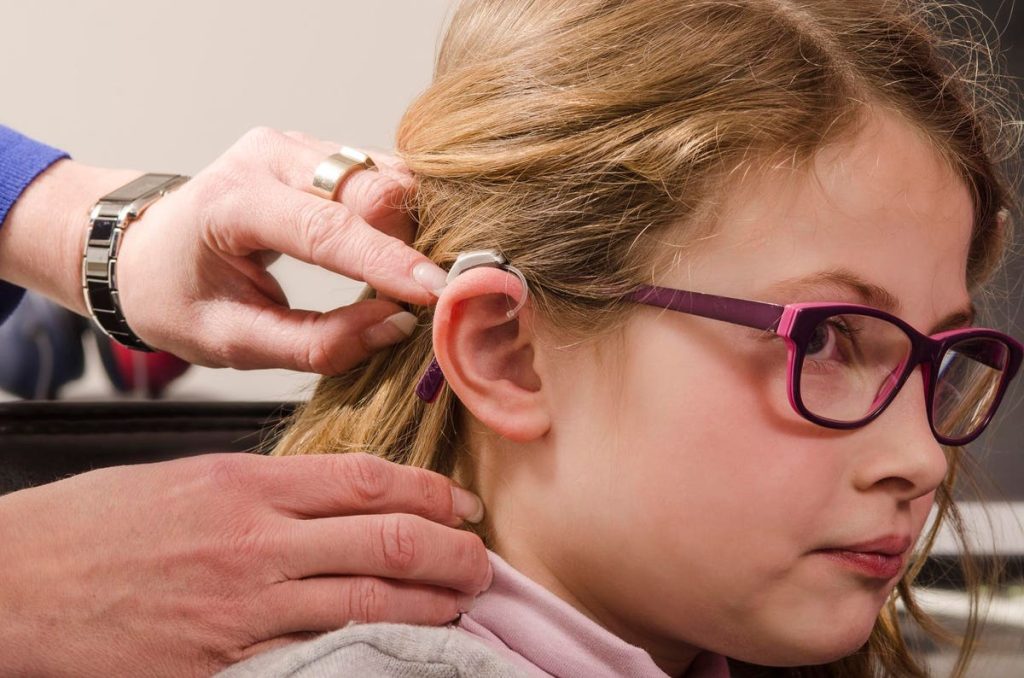Hearing loss is one of the most common congenital variants seen in healthy newborns, with up to 1 in 300 infants born every day with some degree of hearing loss. In 1998, nearly all states in the U.S. required universal hearing screening in the first month of life. This enabled substantial increase in early detection of newborns with hearing impairments.
Alas, there remain significant road blocks in access to specialty care, and even more road blocks in access to hearing aids. These road blocks are, in large part, financial ones, to the tune of, on average, $3000 per ear, and that’s just for the first set of aids. Most children require new hearing aids, new custom fitted ear molds, and other mechanical hearing aid adjustments at least every few years throughout childhood. The costs add up to tens of thousands of dollars per family. Many families, including those with private insurance, can’t afford this, so children with hearing loss often remain without amplification. Currently, in many states, private insurance does not cover the cost of hearing aids for children.
In 2019, California Assembly Bill 598 (Bloom-D) was presented to the Senate Health Committee, requesting that private insurers provide coverage for individuals ages 21 years and younger for hearing aids. The bill, first brought forth in 2019, was put aside, with a proposal to include hearing aid insurance coverage in future state budgets. That was back in 2021, and California remains without fully providing insurance coverage of hearing aids for minors. There are currently 30 states that either provide insurance coverage or are in the process of doing so for minors needing hearing aids. California, the most populous state, has nearly 8,000 families unable to afford aids for their children.
A new proposal, Senate Bill 635 (Menjivar-D), known as the “Let California Kids Hear Act” will require private insurers to cover hearing aids for all minors in California. The issue is now being called a “developmental emergency” by many physicians who specialize in pediatric hearing loss. According to the Joint Commission on Infant Hearing, the “1-3-6” guideline needs to be applied to all infants with hearing loss, in order to minimize developmental delays in language, learning and socialization. The “1-3-6” metric refers to testing by age 1 month, diagnosis by age 3 months, and use of hearing aids by age 6 months. This timeline minimizes speech and language deficits in children with hearing impairments.
Dr. Daniela Carvalho, Pediatric Otolaryngologist at Rady Children’s Hospital in San Diego, testified at the July 2023 California State Assembly regarding the urgency of providing hearing aids as part of insurance coverage. In her own practice, she treats countless families who have private health insurance but are unable to provide hearing aids for their children, as the costs become exorbitant over a short period of time. Children with hearing deficits who go unaided suffer from speech and language delays, requiring speech and educational therapy. In addition, many of these children suffer from social isolation and depression.
While hearing aid use has often been stigmatized, the past decades’ increase in wearable devices, including ear buds, has reduced this substantially. And for adults, the FDA’s approval of enabling many to purchase hearing aids over-the-counter at a substantial cost reduction, has increased the use and further decreased the stigma of wearing hearing aids. As I wrote in Forbes, social isolation and even rise in signs of dementia are frequently seen in adults with untreated hearing loss.
California’s SB 635 has been voted on and was passed unanimously by both the assembly and the senate. Governor Gavin Newsom has until October 14, 2023 to put this bill into law. California lawmakers have sent hundreds of bills to the Governor, including those regarding strengthening concealed weapons laws and providing unemployment benefits for striking workers. Putting SB 635 into law would enable thousands of children to have earlier and better access to hearing rehabilitation during critical points in their early development.
Read the full article here








